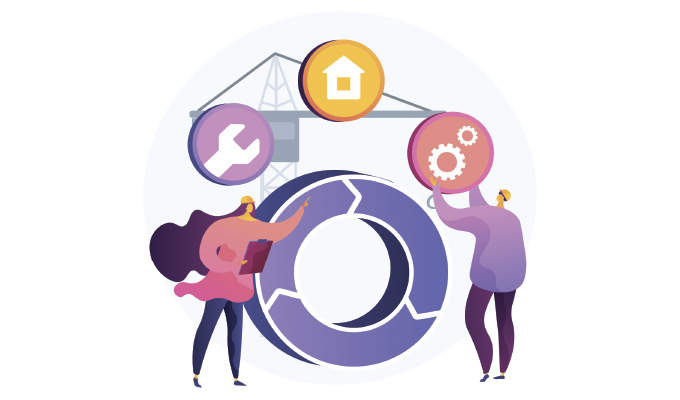Building design and construction is no easy task—it’s like putting together a giant living puzzle with infinite pieces. Without collaboration, it’s impossible to complete.
Over a building project’s lifecycle, an enormous amount of data is shared between team members. Every new model or blueprint, every material choice and every deadline are a data point vital to the timely construction of a new building.
All this data is great—most of the time. But miscommunication often occurs when not everyone on the team can access it.
MORE DATA, MORE PROBLEMS?
It’s all too easy to get lost in the tangled web of information that is a new building project. This, paired with typical information sharing struggles, contributes to misunderstanding and miscommunication among teams.
Think about it: every new email sent is a new file created. While discussing an aspect of the project as seemingly incidental as which lightbulbs to use, an engineer and contractor might exchange several emails—each a new piece of communication to keep track of.
There’s also the risk of misunderstanding. Everyone makes typos but mistyping a serial number or spec or attaching an out-of-date model could lead to mistranslation between parties. Basically, the more emails and other communication exchanged, the easier it is for something to slip. And as we in the AEC industry know all too well, even a small error could lead to huge consequences, impacting the project’s budget and timeline or even the crew’s safety.
We need all these information exchanges to complete the project, so how can we communicate and share data more effectively? The answer lies in data availability.
MAKING DATA AVAILABLE
In the AEC industry, information isn’t always easily passed between different groups. For example, if an architect is interested in using a certain kind of window, they usually can’t just visit the manufacturer’s website to get the cost. Instead, they would speak with their project estimator, who would then call the manufacturer to get an estimate and relay that back to the team. The chain of communication goes on until the team establishes everything from the window style to the budget to performance expectations.
Whenever information isn’t shared directly, some degree of translation must occur. All this translation takes time, and if anyone makes an interpretation error, something could go wrong. When data is more easily accessible, the likelihood of communication errors reduces sharply, and the timeline can speed up. What this could look like is a database, where everyone working on a project can access the data about cost, performance, carbon use and so on for any given material or product that may be used.
PUTTING IT ALL TOGETHER
Clearly, collaboration is vital for a project to be successful. But this teamwork has to be efficient. Today’s cutting-edge AEC technology affords us the ability to make early decisions, saving time and money.
Team members can take simple information about the site, early designs or budget and input it into computer simulations to test ideas virtually and see what is or isn’t going to work. Using software like cove.tool, an architect can conduct various analyses and test against multiple project nuances simultaneously, such as building orientation and materiality. Doing so in the early design stage, particularly when readily-accessible data can be integrated, allows for decisions to be made without significant consequences.
CLOSING THOUGHT
And, when everyone working on the project can access these tests and data quickly, communication and collaboration can progress seamlessly.
About the Author:
Patricia Kusumadjaja, CEP, Assoc. AIA, is the virtual design and construction director at cove.tool, a leading provider of building design and construction software. She has more than 8 years of experience working in the AEC industry, namely in architectural cost estimating, VDC, and project delivery. She strives to make a difference in the way owners, construction and architectural professionals view high-performance design, with the hope that sustainability and environmental consciousness becomes a non-negotiable priority in all future building design and construction.
Modern Contractor Solutions, March 2023
Did you enjoy this article?
Subscribe to the FREE Digital Edition of Modern Contractor Solutions magazine.



